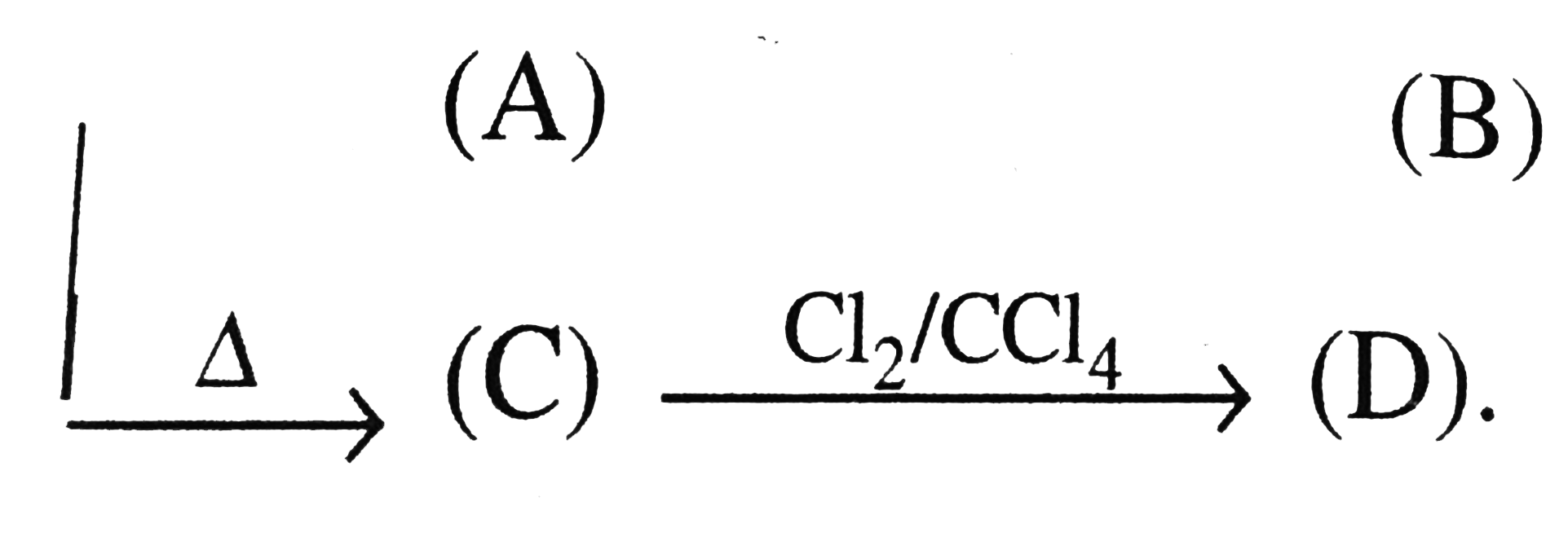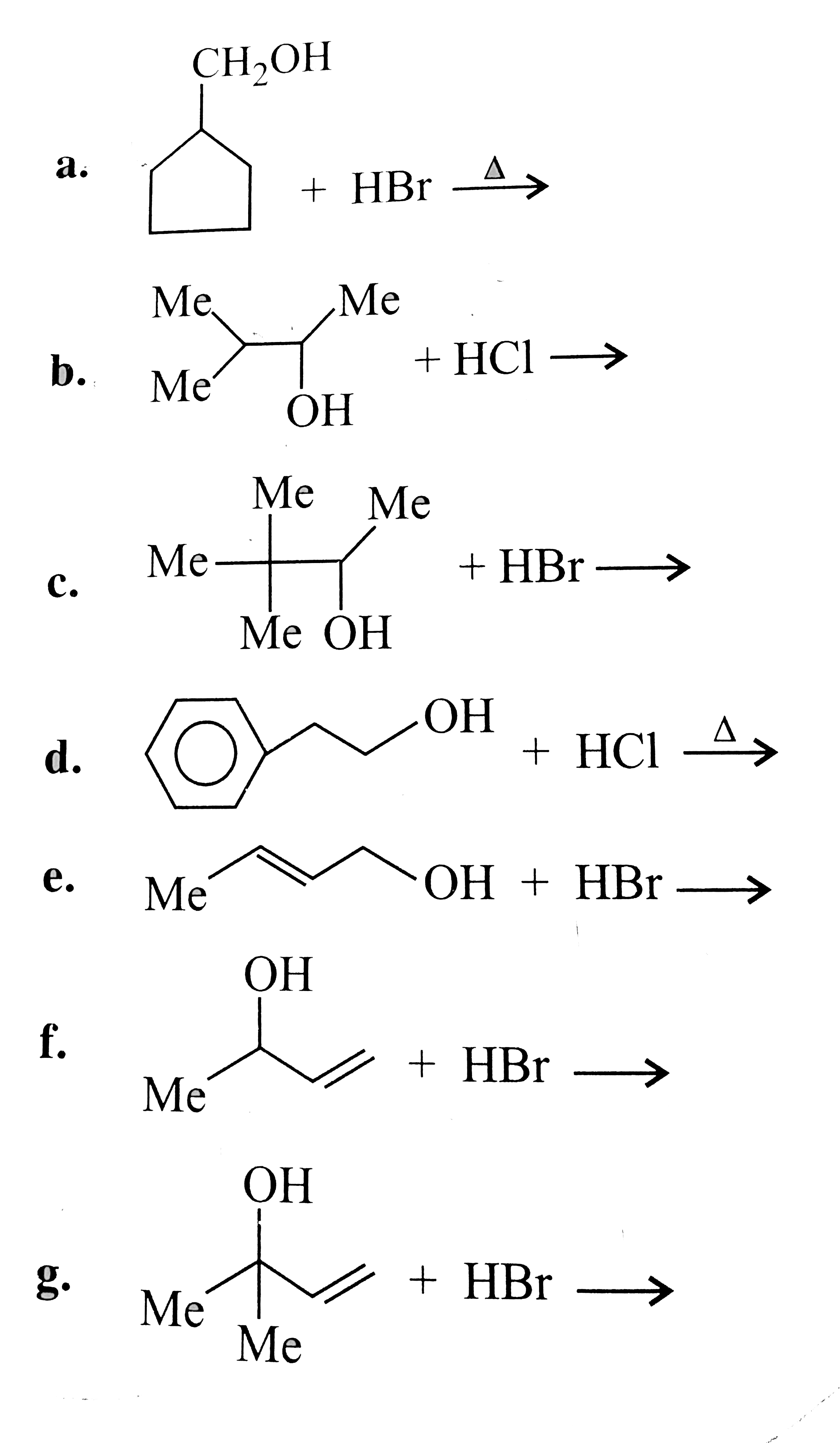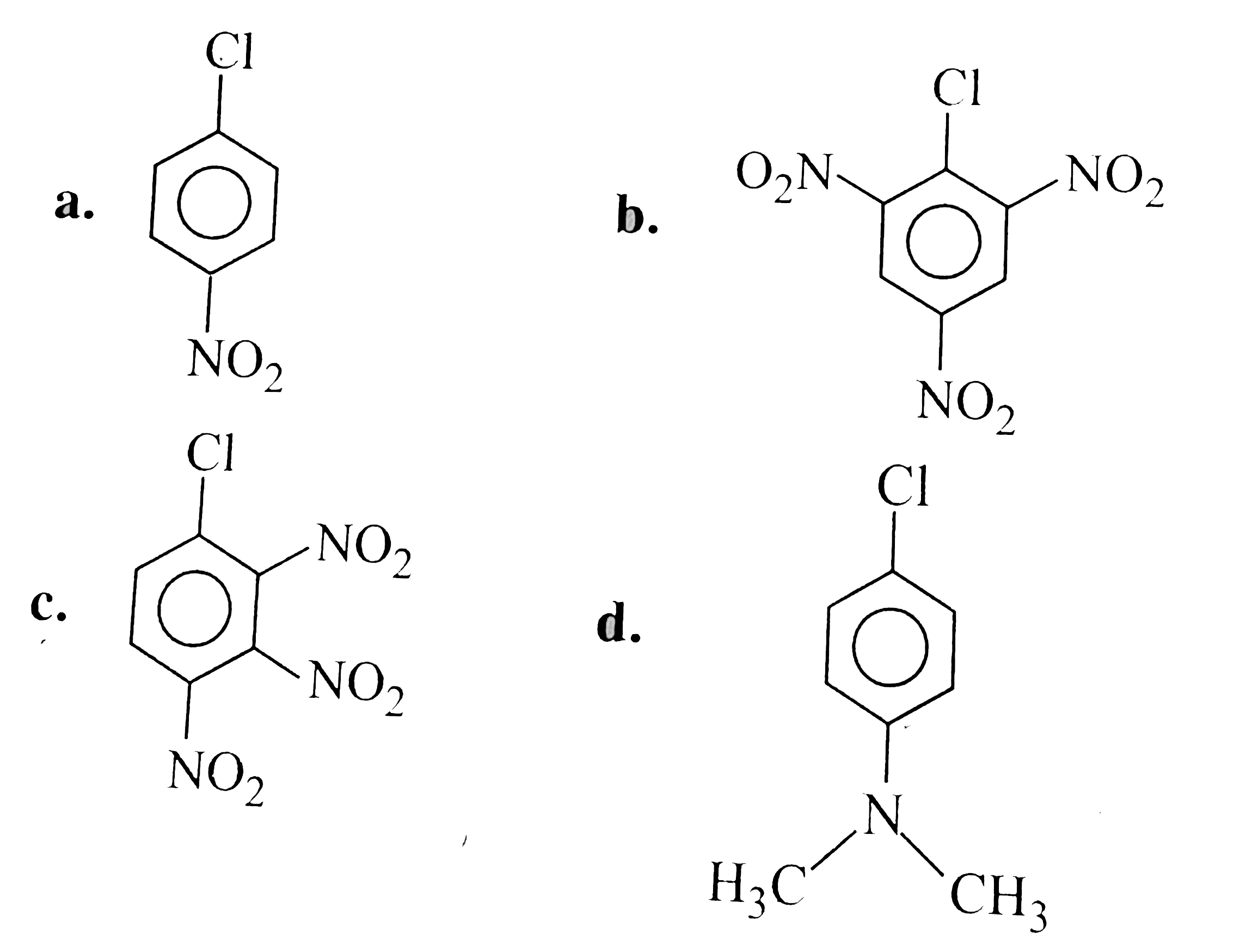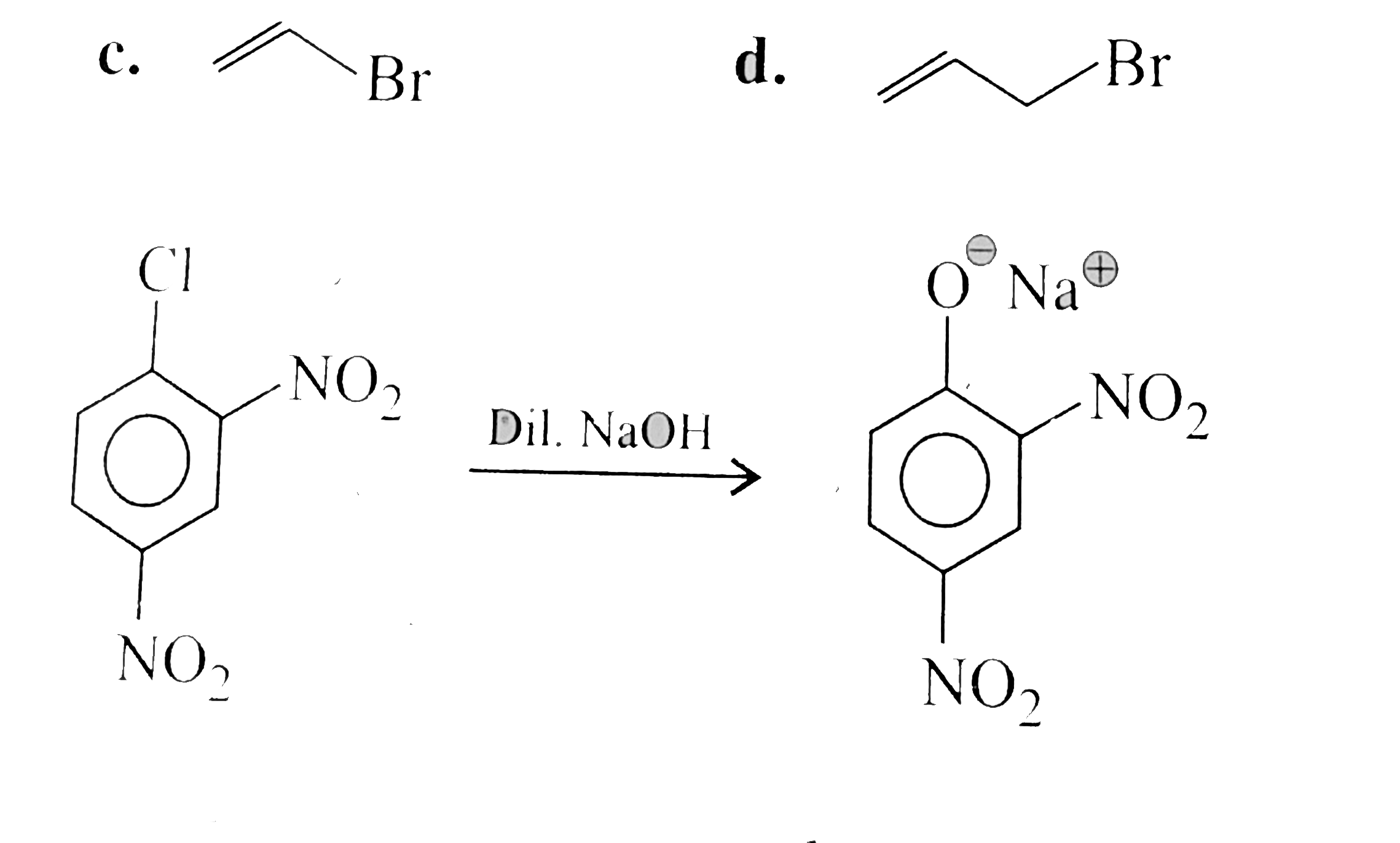Complete Solutions to Exercises Subjective Type of chapter AROMATIC COMPOUNDS AND ALKYL AND ARYL HALIDES of Class 12 book with complete answers and questions
| Class 12 | CHEMISTRY |
| Chapter | AROMATIC COMPOUNDS AND ALKYL AND ARYL HALIDES |
| CENGAGE CHEMISTRY | Exercises Subjective Type |
| Number Of Questions | 5 |
| Academic Year | 2023-24 |
Synthesise the following:
i. Propane to a. `1-` fluroopropane, b. cyclopropane, and c. `2.3-` dunethl butane
ii.
iii. `C_(2) H_(5) Br` to but `-1-` ene
iv.
v. CYclopetane ro hexachloropentadience
(vi) Cyclopentadiene + Hexachlorocyclopentadiene

View Solution(i) Identify the major and minor products.

`h `1-` Butanol `+ HBr rarr`
i. `2-` Butanol `+ HBr rarr`
ii. Suggest the reagenet that could be used to preapare these alkyl haliders form alcholos.
iii. Idenitify the products in the following reactions:
(##KSV_CHM_ORG_P2_C11_E01_003_Q03.png" width="80%"> iv. Idenitify `(A),(B),(C)` and `(D)` in the following:
(##KSV_CHM_ORG_P2_C11_E01_003_Q04.png" width="80%">
v. Idenitfy the products in the following reaction:
(##KSV_CHM_ORG_P2_C11_E01_003_Q05.png" width="80%">
vi, Idendify the products when `(A)` reacts with:
(##KSV_CHM_ORG_P2_C11_E01_003_Q06.png" width="80%">
a. `Br_(2)//Fe` , b. `Br_(2)//CCl_(4)`
c. `NBS` , d. `HBr`
View Solutioni. Classify the following reactions as an addition elimination substituation condensation rerrangement geometrical isomerisation, or oxidation/reduction.

ii. Show both substition and elmination products in these reactions.

iii. SHow the rearranged carbocations that are expected form these carbocations.

iv. WHich path is better for the reaction ?

View Solutioni. sec-Butyl alcohol will undergo alkaline hydrolysis in the polar servent by
a. `SN^(2)` , b. SN^(1)`
c. `SN^(1)` and `SN^(2)` , d. None
ii. Which of the following statements is correct?
`(A) overset(Aq. KOH)(larr) C_(2)H_(5) Br overset(Alc. KOH)(rarr) (B)`
a. `(A)` is obtained by elimination reaction.
b. `(B)` is obtained by substitution reaction.
c. `(A)` is `C_(2) H_(6)` while `(B)` is `C_(2)H_(6)O`.
d. `(A)` is isomer of dimenthy ether `(B)` is dehydrated compound of `(A)`.
iii. WHich of the following will undergo `SN^(2)` readiluy?

iv. Which of the following will undergo hydrolsis most readily with aq. `KOH` ?

V. In tow experiments equal quantities of an alkyl halide, `(C_(4)H_(9)Cl)` were treated at the same temperature with equal voluemes of `0.1M` and `0.2 M` solution of `NaOH`, respectively. In the two experiments the time taken for the reaction of exactly `50%` of the alkyl halide was the same. THe most likely structures of the halides is:

vi. Which of the following methods is not suitable for the preaparation of `RX` ?
a. Halogentaion of alkane
b. `ROH` and `PX_(3)`
c. `ROH` and `HX`
d. Alkene and `HX`
vii. The heterlyic bond dissociation energy of the `(C-Cl)` bond ib vinyl chloride is 207 kcal `mol^(-1)` as compared to `191 kcal mol^(-1)` in the case of `(C-Cl)` bond in `C_(2)H_(5)Cl`. One explainion for this observation is:
a In `C_(2)JHl` the bond energy is decreased through resonace involving lone pair of `overline(e)'s` on chlorine.
b. The hyperconjugation stabilsation in `C_(2)H_(5)Cl`.
c. In vinyl chloride, `(C-Cl)` bond gets partial double bond character through resonance.
d. In vinyl chloride the `Cl` atom is attached to `sp-` hybridised `C`, whereas in `C_(2)H_(5)Cl` it is attached to `sp^(3)`-hybridsed `C` atom.
viii. When `(Me_(3)C - Cl)` is reached with `NaOMe` the major product is

ix. Which of the following would be hydrolsed most readily?

x.

The above reaction proceeds rhrough:
a. Electrophilic additon
b. Benzyne intermediate
c. Activated nucleophilic substitution
d. Oxirane
xi.
View SolutionA white precipitate was formed slowly when silver nitrate was added to compound `(A)` with molecular formula `C_(6)H_(13)Cl`.Compound `(A)` on treatment with hot alcoholic potassium hydroxide gave a misture of two isomeric alkenes `(B)` and `(C)`, havinig the formuls `C_(6)H_(12)`. The mixture of `(B)` and `(C)`, on ozonolsis, furnished four compounds.
i. `CH_(3)CHO`,ii `C_(2)H_(5)CHO`
iii. `CH_(3)COCH_(3)`,(iv) `CH_(3)-underset(CH_(3))underset(|)(CH)-CHO`
What are the structures of (A),(B)and (C) ?
View Solution
Exercises Subjective Type questions and complete solutions for chapter AROMATIC COMPOUNDS AND ALKYL AND ARYL HALIDES of CENGAGE CHEMISTRY (ENGLISH) of Class 12
All Exercises from CENGAGE CHEMISTRY Class 12 CHEMISTRY AROMATIC COMPOUNDS AND ALKYL AND ARYL HALIDES
- Archives Assertion-Resoning
- Archives Fill In Theblanks
- Archives Mutiple Correct
- Archives Mutiple Correct Answers Type
- Archives Single Correct
- Archives Single Correct Answer Type
- Archives Subjective
- Archives Subjective Type
- Exercises Assertion-Resoning
- Exercises Assertion-Resoning Type
- Exercises Concept Application
- Exercises Concept Application Type
- Exercises Linked Compreshension
- Exercises Linked Compreshension Type
- Exercises Multiple Correct
- Exercises Multiple Correct Answers Type
- Exercises Single Correct
- Exercises Single Correct Answer Type
- Exercises Subjective
- Exercises Subjective Type
- Illustration
- Solved Examples
- Solved Problems